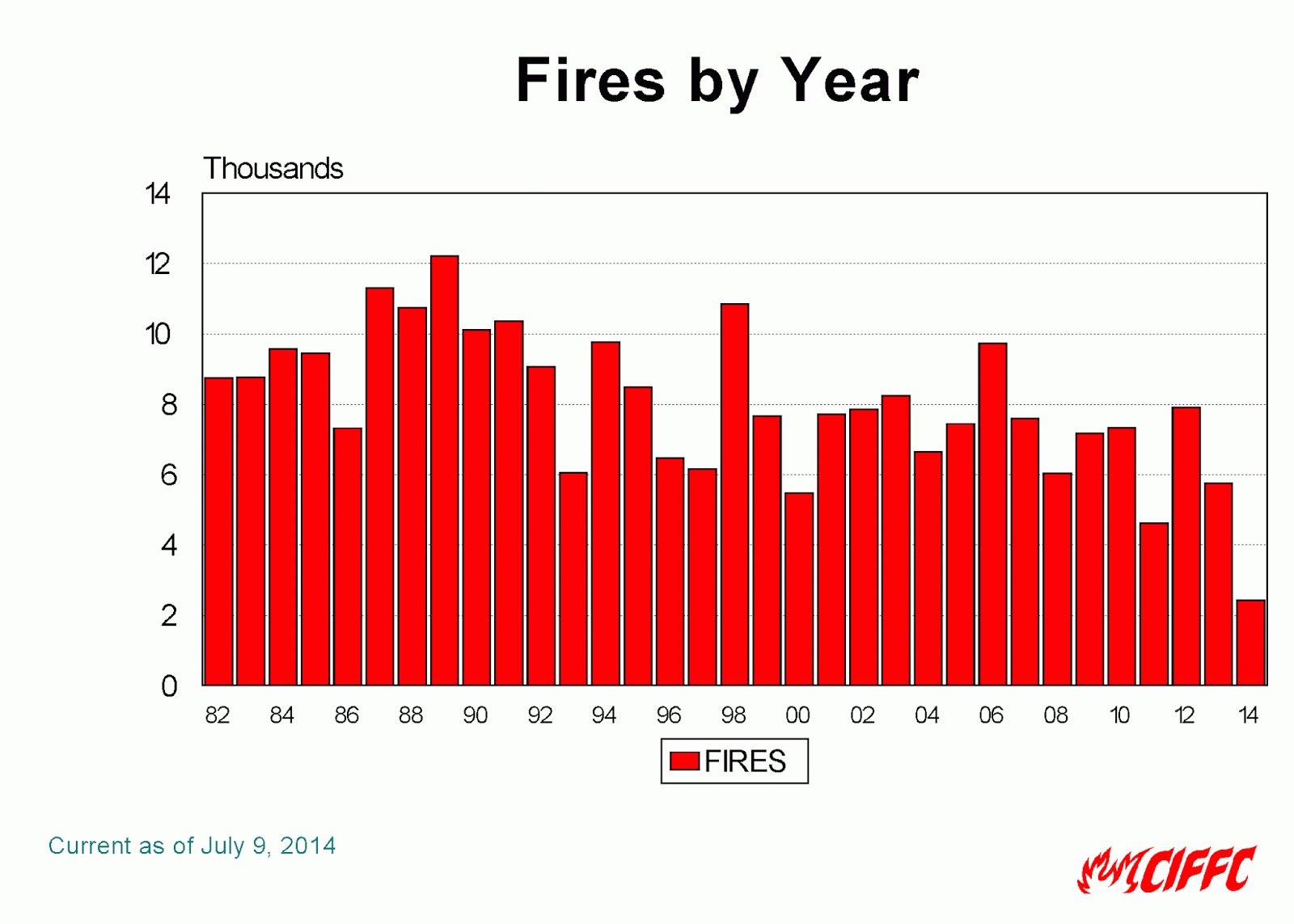For most
Canadians, our interaction with forest fires is through the news. Pictures of candling trees shooting flames
high in the sky and jumping from treetop to treetop. For many of us, that reality becomes closer
to home with periodic episodes of degraded air from fire smoke generated
sometimes thousands of kilometers away.
The actual
number of fires nationally is actually fairly constant and may even be
decreasing. The area burned seems to fluctuate more widely. Moreover province
by province analysis see wide variation in fire activity from year to year justifying
the interprovincial movement of fire suppression crews as needs shift in a less
than predictable manner (there is minimal correlation to the El Nino:La Nina
cycles)
Predicting
fires, fire behavior, smoke impacts and health impacts has become a significant
Canadian operation. Despite the
headlines garnished by fires on the outskirts of communities that impinge on residential
areas, the vast majority of Canadian wildfires are located in sparsely or
inhabited areas. Great information is
available on fire location and activity at Canadian Wildland Fire Information
System and the Canadian
Interagency Forest Fire Centre
From a
public health perspective the key issues relate first and foremost to those in
the path of fires and their safety for which the number of deaths and injuries
from forest fires annually are counted on fingers and often associated with
fire suppression efforts. Secondly are
the largescale impacts of smoke dispersion.
BC
developed the BlueSky forecasting system based on particulate matter in 2010
and has expanded to Western
Canada and more recently to Eastern Canada. More recently Meterological Services of
Canada (MSC)have started limited user testing of a Forest Fire Smoke
Forecasting system. Both systems rely
heavily on remote satellite sensing information combined with meterological
forecasting information. The MSC modelling is expected to bring a greater level
of sophistication and geographic precision.
Some areas
have done better measuring and modelling of predicted health outcomes. A recent comprehensive review by the National
Collaborating Centre on Environmental Health provides an international
state of the art understanding of the impacts, surveillance and advice to be
provided during a forest fire smoke event.
The synthesis of which is copied below as found in the general advice
synthesis though directed to BC for some reason even though forest fire smoke
is a national concern.
Communications
advising people to:
• stay indoors: reduce time spent outdoors in
order to protect health
• reduce outdoor physical activity: decrease
physical exertion outdoors in order to protect health
• wear an N95 respirator: properly use a
certified N95 half face respirator to reduce exposure to smoke
• activate asthma/COPD action plans: ensure
that plans for self-management of asthma/COPD are in place, up-to-date, and
adequate supplies (e.g., medication) is available
• use a home clean air shelter: spend time in a
room in your home with cleaner air to reduce smoke exposure
·
Cancelling
outdoor events: Decision that group activities that occur outside will not take
place. Such activities include school activities (e.g., recess, outdoor classes
and events), sporting events (e.g., tournaments, practices) and mass gatherings
(e.g., arts and cultural events, athletic events).
·
Providing
community clean air shelter(s): Spend time in a community based facility such
as a mall or school that has cleaner air than outdoor air.
·
Augmenting
air filtration in institutions: The use of in-duct or portable filtration to
improve air quality and protect people in institutional settings including
hospitals, nursing homes, long term care facilities, day cares, schools, and
other institutions.
·
Evacuating:
The urgent removal of individuals from a community in order to protect them
from exposure to wildfire smoke.


No comments:
Post a Comment